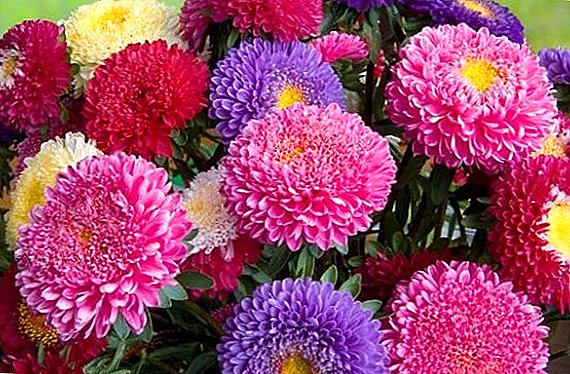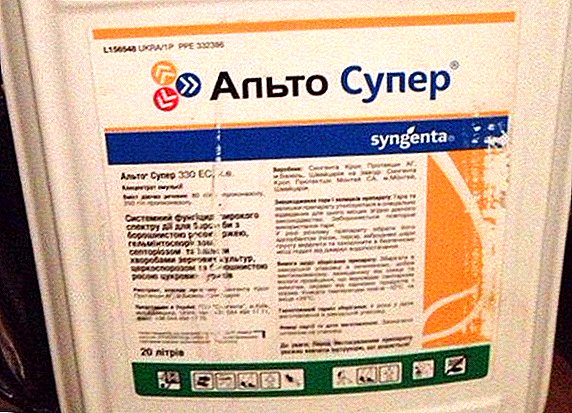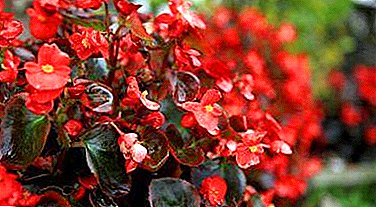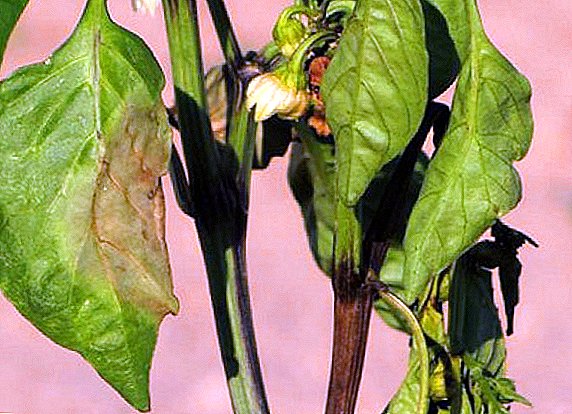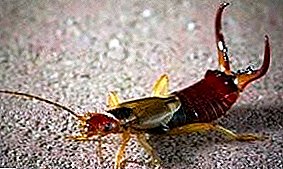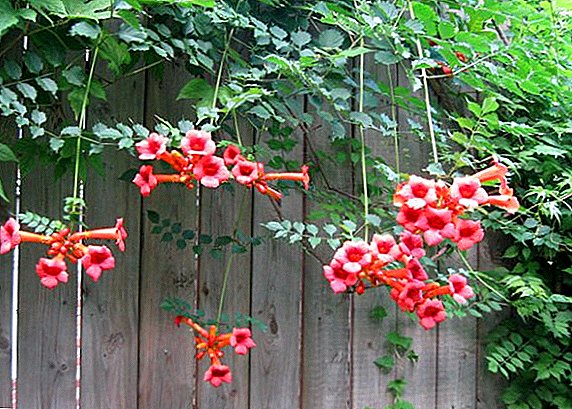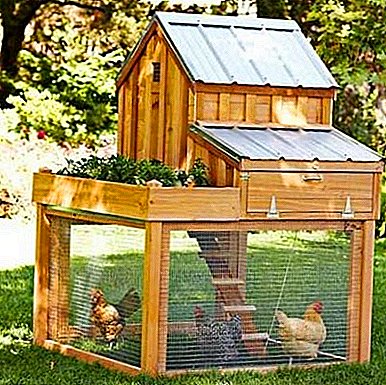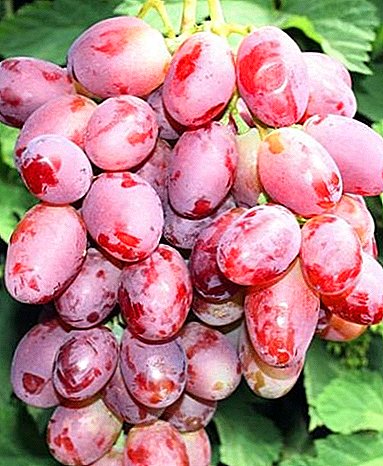
Basil is a very common plant that is used in many countries. A gardener who wants to grow it alone can plant a potted plant on a windowsill.
As with the cultivation of any other plant, you need to follow some rules, so as not to harm the bushes.
However, despite some difficulties in caring for basil, all efforts will be rewarded with tasty spicy leaves.
The best varieties for breeding at home
 Basil varieties are divided into groups such as stunted, medium tall and tall. The most favorable for growing at home are just undersized species. Due to its small size (about 30 cm), rapid growth and easy maintenance, they are very loved by summer residents who grow them literally on the windowsill. Examples of such varieties: "Balconstar", "Pepper", "Dwarf", "Broadleaf", "Marquis".
Basil varieties are divided into groups such as stunted, medium tall and tall. The most favorable for growing at home are just undersized species. Due to its small size (about 30 cm), rapid growth and easy maintenance, they are very loved by summer residents who grow them literally on the windowsill. Examples of such varieties: "Balconstar", "Pepper", "Dwarf", "Broadleaf", "Marquis".
There is a variety of basil called "Yerevan". Despite the size, reaching up to 80 cm, many gardeners grow it at home in pots.
Where to grow?
Choosing a place
When keeping pots on the balcony, you should observe the well-being of the plant, since it can become infected with aphids or a stick caterpillar. It is worth noting that in the shade basil grows much worse than in the sun, its size decreases, and the aroma is also lost. In addition, he does not like excessively wet ground.
Soil preparation
Suitable grounds for planting basil are:
- A mixture of universal soil for plants and garden land in a 1: 1 ratio.
- A mixture of biohumus and soil for indoor plants in the ratio of 1: 4.
- Mix of biohumus and coconut fiber in the ratio 1: 2.
Whatever the gardener chooses, the ground must be loose for the "breathing" of the seeds. After selecting the soil at the bottom of the pot should pour drainage (expanded clay or pebbles) with a height of 2-3 cm, then the soil itself, without reaching the edges of the pot 3-4 cm. And finally, you need to pour plenty of soil.
Pot selection
If the seeds are just planted or they are barely sprouting, you can keep basil in a spacious container or in separate small pots. With time, when the plant will increase growth, it is worth transplanting each seedling into a separate small pot, and weak copies simply pull out.
In a pot plant can exist until the end of life. There should be holes on the bottom to drain the water so that moisture from the drainage does not stagnate in the ground.
Seeds
How to prepare the seeds?
Of course, you should decide in advance on the variety of basil in accordance with the requirements and expectations of the summer resident, and then buy the necessary seeds. In order to speed up the seedlings a little, you should soak them in warm water for a day, changing it every 12 hours. After that, you need to hold the seeds in a weak solution of potassium permanganate. After 2 hours they are dried on gauze or napkin.
Landing methods
 The classical method. To plant basil using the classical method, you need to prepare seeds for planting as described above, and then plant them in the soil at a distance of 0.5-2 cm from each other (depending on the number of seeds and the size of the tank in which they are going to grow the plant) . After that - sprinkle with loose soil, not pressing down. When sprouts reach 5-7 cm, you can pour a little more ground.
The classical method. To plant basil using the classical method, you need to prepare seeds for planting as described above, and then plant them in the soil at a distance of 0.5-2 cm from each other (depending on the number of seeds and the size of the tank in which they are going to grow the plant) . After that - sprinkle with loose soil, not pressing down. When sprouts reach 5-7 cm, you can pour a little more ground.- Cuttings. You can propagate basil and cuttings. To do this, leave at the bottom of the cutting 6-8 cm oblique cut, cut off the lower leaves and plant in the ground. The advantage is that the varieties can first be grown at home, and in the spring they can be planted in a greenhouse or in open ground.
- Transplanted adult rooted plants. It also happens that you need to transplant basil from the garden to the pot or from one container to another. If you need to transplant, you should pour the plant with settled water, carefully dig it up and, together with the root system, transplant it into a pot with drainage in advance, expanded clay and watered with water. Be sure to remove damaged or diseased areas of the plant. And finally, the last point - you need to pour basil water at room temperature.
During planting or transplanting, basil root should not be bent or deformed in any way.
Planting young plants
Each plant requires enough space even during its dwelling in large capacity with other seedlings, so it is so important to pick a pick in time, screening out unnecessary, frail or small specimens. After some time after planting, basil can be planted both in separate, larger pots, and immediately in the ground or greenhouse, if it is planned to conduct cultivation on the plot.
How to care at first?
When sprouts with the first leaves appear in the pot, it is important to perform a picking in order to allow larger, healthier seedlings to grow quietly. After this, it is worth transplanting the seedlings into larger pots, watering it every day and fertilizing the soil once a month. After some time (depending on the variety) 4-6 leaflets will appear on the plants.and you can safely pinch the top pair.
Growing basil seems simple and easy, and it's true. Many gardeners grow it at home, which also makes the task easier. Under sufficient conditions and the desire of the summer resident, you can grow basil and harvest even several times a year! One has only to try, because very soon the plant will reward the owner with a crop of spicy leaves.


 The classical method. To plant basil using the classical method, you need to prepare seeds for planting as described above, and then plant them in the soil at a distance of 0.5-2 cm from each other (depending on the number of seeds and the size of the tank in which they are going to grow the plant) . After that - sprinkle with loose soil, not pressing down. When sprouts reach 5-7 cm, you can pour a little more ground.
The classical method. To plant basil using the classical method, you need to prepare seeds for planting as described above, and then plant them in the soil at a distance of 0.5-2 cm from each other (depending on the number of seeds and the size of the tank in which they are going to grow the plant) . After that - sprinkle with loose soil, not pressing down. When sprouts reach 5-7 cm, you can pour a little more ground.
